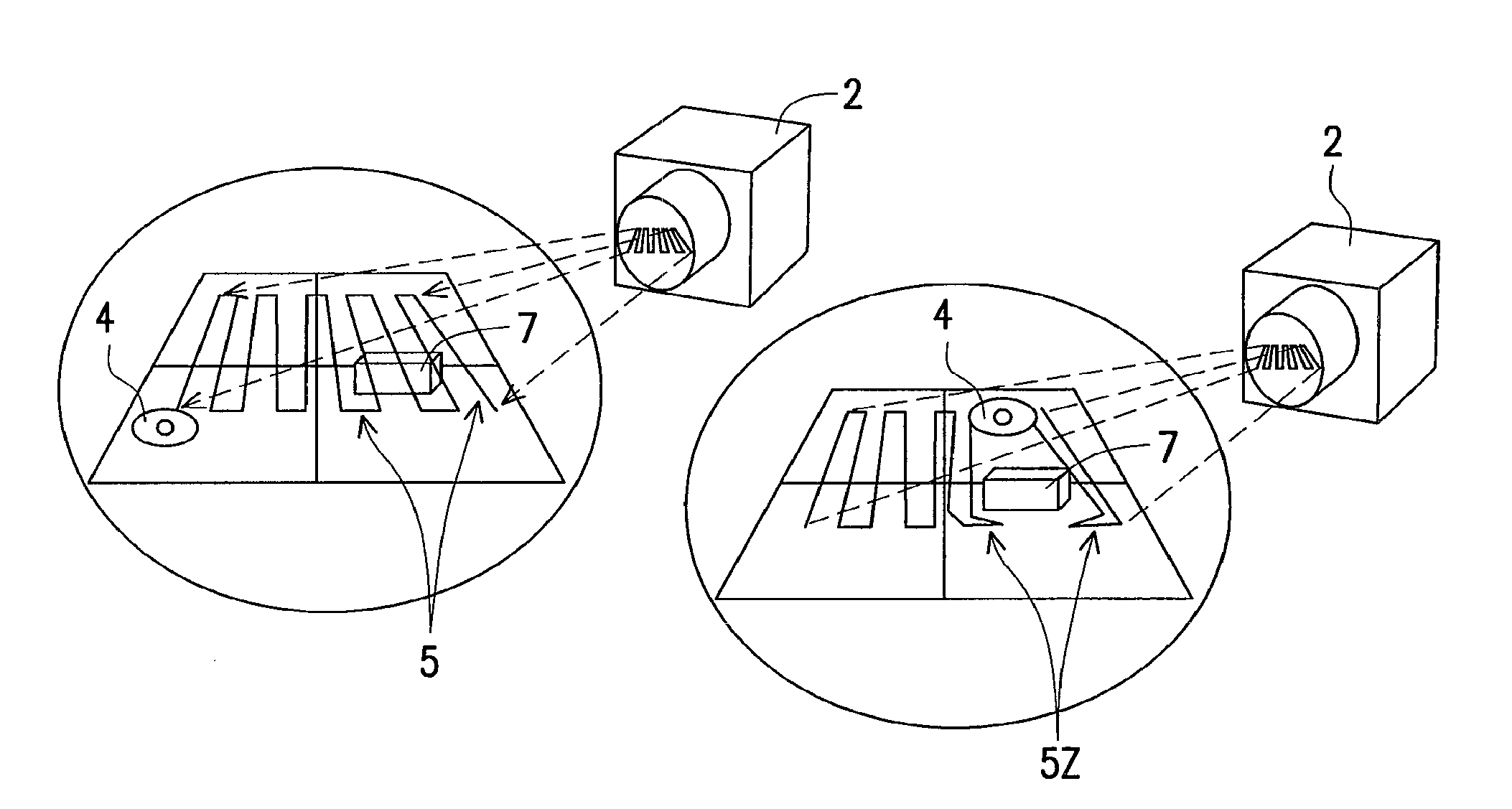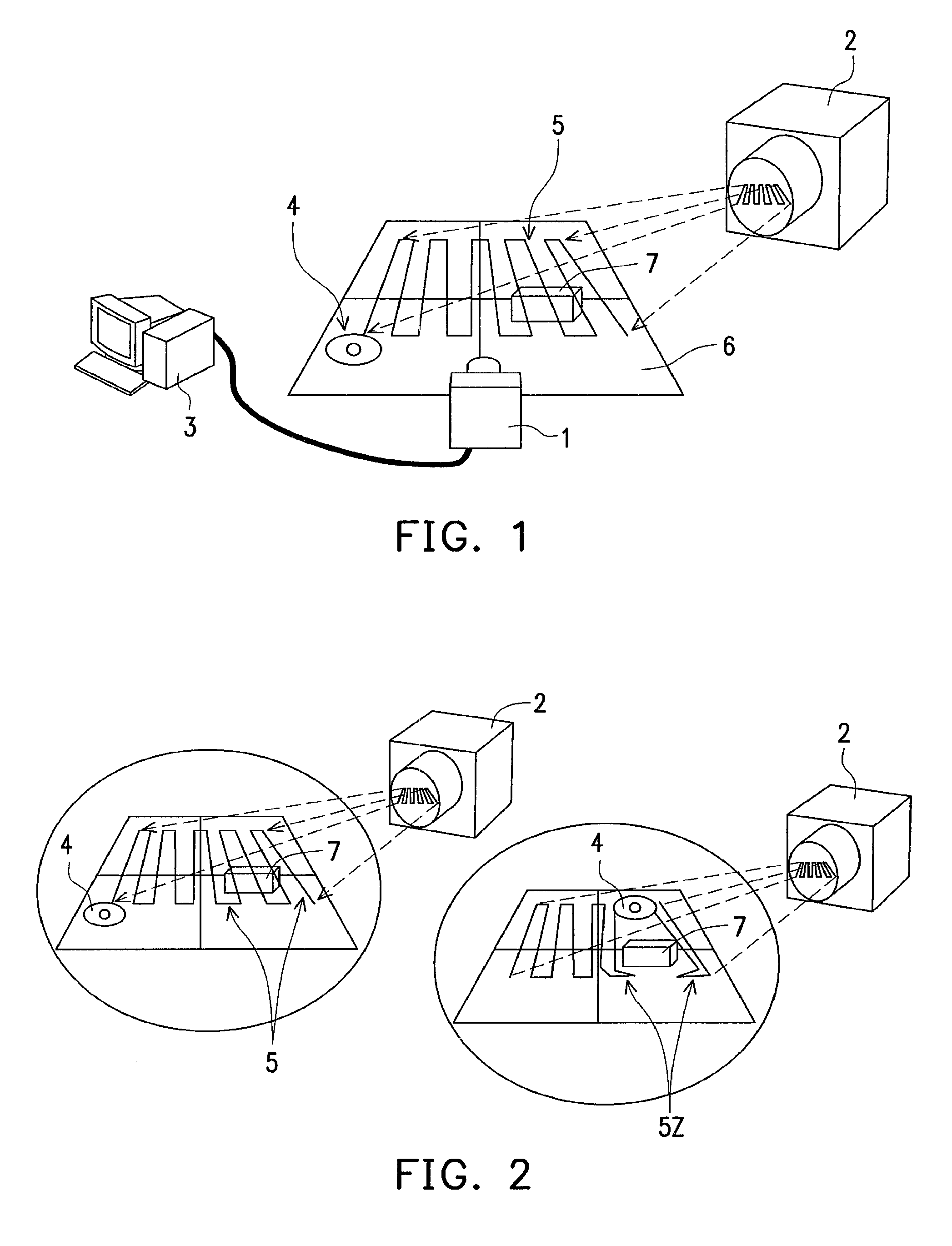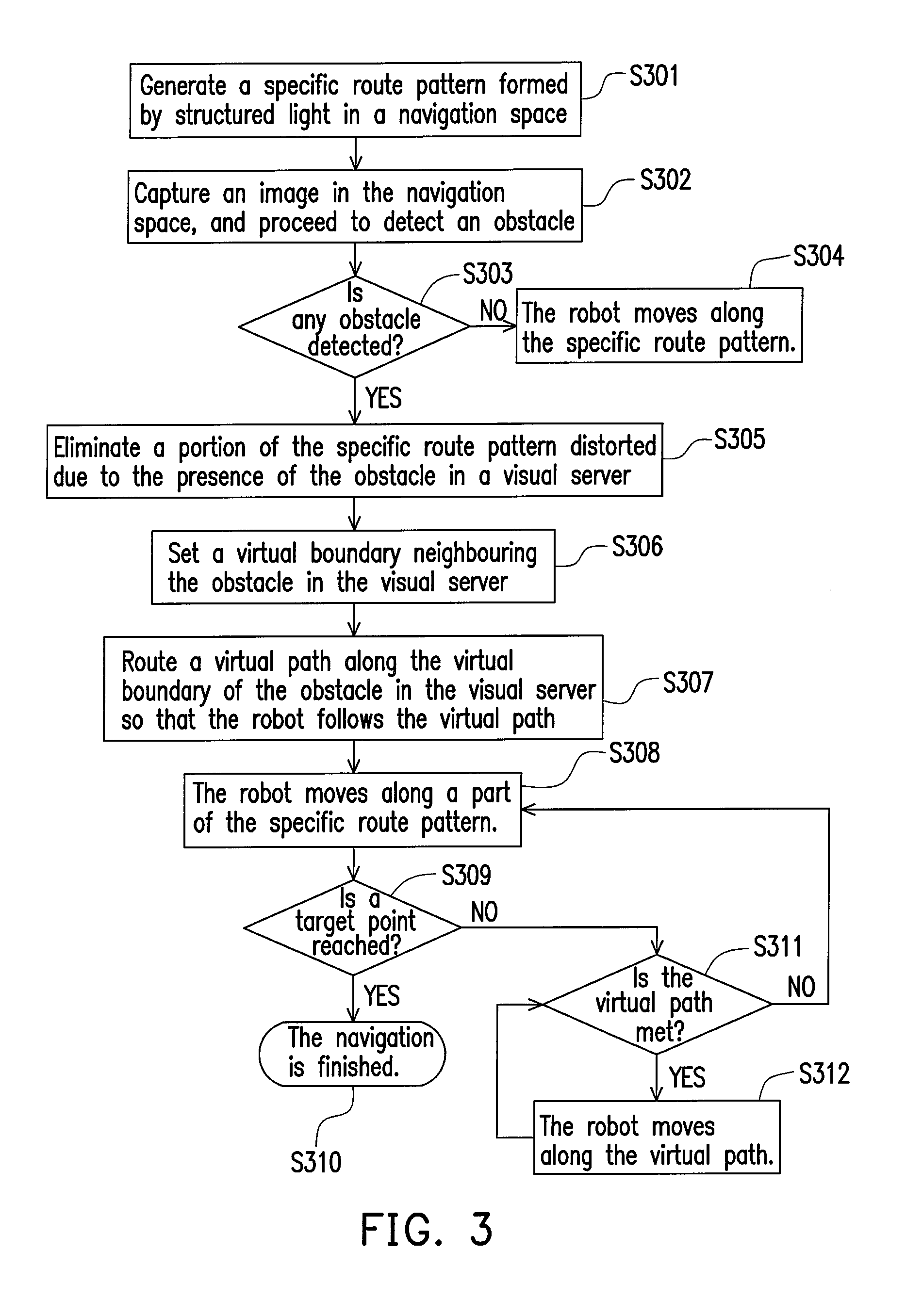Visual navigation system and method based on structured light
a navigation system and structured light technology, applied in the field of visual navigation system, can solve the problems of inability to obtain, inability to anticipate or identify dynamically changing environments, and inability to diversify the environment-sensing capability of robots, so as to reduce the operation burden of the visual server and increase the accuracy of robot navigation
- Summary
- Abstract
- Description
- Claims
- Application Information
AI Technical Summary
Benefits of technology
Problems solved by technology
Method used
Image
Examples
first embodiment
[0027]First of all, a “robot” here is defined as a mobile platform capable of carrying out a particular task. Such a platform, no matter driven by wheels (or referred to as a wheeled vehicle) or moving on foot, is called a robot. Then, referring to FIG. 1, the present invention is shown, and the visual navigation system based on structured light includes an image capture device 1, such as a digital camera, a projector 2, a visual server 3, and a robot 4. The projector 2 projects the structured light for forming a specific path pattern 5 into a navigation space 6 where the robot 4 requires a navigation path, and the structured light may be a visible light or invisible light. Meanwhile, the structured light may be generated continuously, or intermittently, or only once. The robot 4 senses the specific path pattern through an optical sensor or an image sensor, and thus the robot 4 is capable of moving along the specific path pattern 5. The image capture device 1 captures an image in th...
second embodiment
[0029]FIG. 4 shows the present invention. The visual navigation system based on structured light includes an image capture device 1, a projector 2a and another projector 2b, a visual server 3, and a robot 4. The projector 2a is constructed opposite to the projector 2b. The projectors 2a, 2b respectively project specific path patterns 5a, 5b overlapped with each other into the navigation space 6 where the robot 4 requires a navigation path. The specific path patterns 5a, 5b together form a combined path pattern large enough for covering the navigation space around the obstacle 7, such that the obstacle 7 does not block the projection of the structured light due to its own volume to result in a region without the combined path pattern nearby. In order to enable the robot 4 to identify that the path it follows is the path pattern 5a or 5b, each of the specific path patterns 5a, 5b has structured light of a different colour, for example, red or blue, such that the robot 4 moves along a ...
third embodiment
[0031]FIG. 5 shows the present invention. The visual navigation system based on structured light includes an image capture device 1, a projector 2c and another projector 2d, a visual server 3, and a robot 4. The projectors 2c and 2d may be independent devices or they may be connected to each other via a mechanism. The two projectors 2c and 2d respectively project specific path patterns 5c, 5d into a navigation space 6 where the robot 4 requires a navigation path. The image capture device 1 captures an image in the navigation space and then transmits the image to the visual server 3 to be processed. It is clearly seen from FIG. 5 that, the regions in the navigation space 6 where the projectors 2c, 2d intend to project thereon are not overlapped with each other, so the specific path patterns 5c, 5d are not overlapped with each other as well. If the specific path patterns are not overlapped with each other, the projectors respectively project towards the same region in the navigation s...
PUM
| Property | Measurement | Unit |
|---|---|---|
| volume | aaaaa | aaaaa |
| distance | aaaaa | aaaaa |
| color | aaaaa | aaaaa |
Abstract
Description
Claims
Application Information
 Login to View More
Login to View More - R&D
- Intellectual Property
- Life Sciences
- Materials
- Tech Scout
- Unparalleled Data Quality
- Higher Quality Content
- 60% Fewer Hallucinations
Browse by: Latest US Patents, China's latest patents, Technical Efficacy Thesaurus, Application Domain, Technology Topic, Popular Technical Reports.
© 2025 PatSnap. All rights reserved.Legal|Privacy policy|Modern Slavery Act Transparency Statement|Sitemap|About US| Contact US: help@patsnap.com



